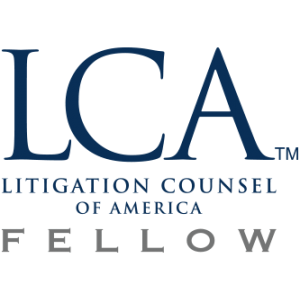Fractures After a Crash: Understanding the Most Common Bones Broken in Car Accidents
Car accidents are one of the leading causes of serious injuries in the United States, often resulting in fractures that can disrupt your life. When high-impact collisions occur, the human body is often unable to withstand the force, leading to broken bones that require extensive medical treatment. Understanding which fractures are most common after a crash can help you recognize symptoms, prioritize care, and seek compensation for your injuries.
At Denlea & Carton LLP, we guide car accident victims through the legal process of pursuing compensation for medical expenses, lost wages, pain and suffering, and more. If you’ve suffered from a fracture due to someone else’s negligence, our experienced personal injury attorneys are here to help.
Why Do Bones Break in Car Accidents?
The immense forces involved in a car accident, usually from sudden stops, high-speed impacts, or crushing force, can place extreme pressure on the body. This is particularly true in head-on collisions, side impacts, and rear-end crashes, all of which transfer energy to the occupants of the vehicle.
While seatbelts and airbags mitigate some of the risk, they cannot always prevent bones from breaking. Areas of the body directly exposed to impact, such as legs, arms, and the chest, are especially vulnerable. Even relatively healthy bones can fracture under enough pressure. However, individuals with specific medical conditions like osteoporosis may be at greater risk of sustaining serious fractures. Applying sudden, isolated force to a bone—such as striking a dashboard, being pinned against the car’s frame, or absorbing the energy of a deployed airbag—often results in breaks or shattering.
Most Commonly Fractured Bones in Car Accidents
Some areas of the body are more prone to fractures in car accidents based on how individuals are positioned in the vehicle and the nature of the crash. Below are the most common fractures resulting from car accidents and why they are so prevalent.
Leg and Ankle Fractures
The legs absorb considerable force during an accident, especially in front-end collisions where the lower body is compressed by the dashboard or kicked forward into the floorboard. Fractures to the tibia (shinbone), fibula (calf bone), and ankle bones are common. These injuries often require surgery, immobilization, and extended physical therapy.
Arm and Wrist Fractures
Bracing for impact by extending your arms often contributes to severe fractures of the humerus (upper arm), radius, and ulna (forearm bones), as well as the delicate bones in the wrist. These fractures are common for drivers and front-seat passengers and may result from gripping the steering wheel or trying to shield your face during a crash.
Rib Fractures and Sternum Injuries
Rib fractures are among the most painful injuries sustained in car accidents. The seatbelt applying pressure during a collision or the impact against the steering wheel often causes ribs to break. Rib fractures can puncture internal organs, leading to life-threatening complications. Sternum injuries are also common in higher-impact crashes where advanced restraint systems are deployed.
Facial Bone Fractures
Facial fractures frequently occur when a victim’s face strikes the steering wheel, dashboard, or airbag. Bones in the nose, cheekbones (zygomatic bones), and jaw (mandible) are particularly at risk. These fractures often affect appearance and function, requiring reconstructive surgery and dental work.
Spinal Fractures
The vertebrae in the spine are highly susceptible to fractures when subjected to sudden force in a crash. Compression fractures in the lumbar and thoracic spine are common and can lead to mobility issues, chronic pain, or even paralysis in severe cases.
Collarbone Fractures
The clavicle, or collarbone, is one of the most commonly fractured bones in the human body due to its location and exposure. During a car or truck accident, the clavicle can break when a victim’s shoulder is forced backward or compressed against the car’s structure.
Recognizing the Signs of a Fracture After an Accident
Knowing the symptoms of a fracture can help you seek treatment quickly, reducing the risk of long-term complications. Signs of a fracture may include:
-
- Immediate Pain and Swelling: Severe pain at the site of injury, accompanied by swelling and tenderness, is a classic sign of a fracture. This pain typically worsens with movement.
- Deformity or Inability to Move: A visibly misshapen or deformed body part often indicates a broken bone. Additionally, you may experience limited range of motion or complete inability to move the affected limb.
- Bruising and Tenderness: Bruising around the injury site is common following bone fractures. Tenderness to the touch is also a strong indicator that a bone has broken or been damaged.
If you notice any of these symptoms after a car accident, seek medical attention immediately.
What to Do If You’ve Suffered a Fracture in a Car Accident
- Seek Immediate Medical Attention: Identifying and treating fractures early reduces the risk of long-term damage.
- Document Your Injuries: Take photos of visible injuries and keep detailed records of your medical treatment.
- Consult a Personal Injury Attorney: Reach out to Denlea & Carton LLP to review your case and explore your legal options.
If you or a loved one has suffered a fracture in a car accident, contact Denlea & Carton LLP at (914) 331-0100 to schedule a consultation. We are dedicated to helping you rebuild your life after a crash.
Legal Considerations: Seeking Compensation for Fracture Injuries
If you’ve suffered a fracture in a car accident caused by someone else’s negligence, you may be entitled to compensation. A personal injury claim can help you recover costs for your injuries and losses, including the following factors:
- Medical Expenses and Lost Wages: Fracture injuries often come with significant medical bills, including surgery, rehabilitation, and medication. If your injury prevents you from working, you can seek compensation for lost wages or diminished earning capacity.
- Pain and Suffering: Fractures can cause prolonged pain and emotional distress. Compensation for pain and suffering reflects both the physical and mental burden of your injuries.
How a Personal Injury Attorney Can Help Your Case
At Denlea & Carton LLP, we understand the challenges associated with recovering from car accident fractures while navigating the legal system. Our team will handle every aspect of your claim, from gathering evidence to negotiating with insurance companies. We are dedicated to securing the compensation you deserve.
Contact Denlea & Carton LLP today to discuss your case and learn how we can help.


















